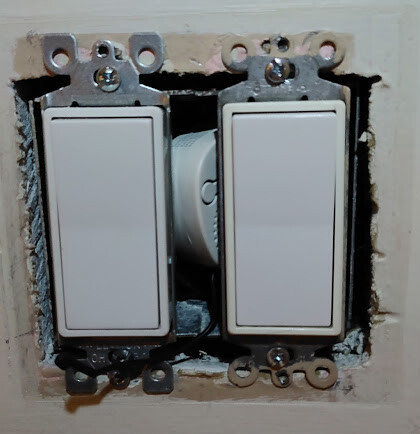At equal transmission power, yes. At equal antenna sensitivity, yes.
And since those two things are 'close enough' in these types of devices, my final answer is yes.

At equal transmission power, yes. At equal antenna sensitivity, yes.
And since those two things are 'close enough' in these types of devices, my final answer is yes.

There are several things that come into play with RF transmissions. Penetration is only one mode of transmission.
It is also possible for RF signals to be reflected. For example, in a microwave oven, the signals (which are similar in frequency to WiFi and Zigbee) bounce around the inside of the enclosure until they are absorbed by the object being heated.
Thus, in some situations Z-Wave might have a better transmission distance whereas in other conditions Zigbee might be better.
I never have experienced a failure with Zigbee, but I am constantly messing around with Z-Wave trying to get a stable transmission path. You have to be very careful to avoid HVAC ductwork, furnaces, water heaters, fireplaces, plate glass mirrors, fish tanks, heavy furniture, etc. I have had to relocate both Z-Wave devices and repeaters in an attempt to avoid such obstacles. Devices that are close to the ceiling often work better than those closer to floor level.
For example, I have a Aeotec Z-Wave 6 in 1 sensor sitting on top of an executive safe to monitor motion and vibration. That sensor is only 15-20 feet from the hub yet I will occasionally lose connection.
In contrast, I have a Smartthings Zigbee multisensor that is inside the freezer in the garage to monitor temperature, yet it never fails to give a reading. I guess the signals bounce around inside the freezer until they escape through the door seal.
And on the other hand I have LoRa devices (same frequencies as US zwave - 9xx Mhz) a half mile from my house and they have no issues communicating through 4 walls and 2500 feet of distance with numerous trees in between.
But that's a different protocol, different radio, better antenna, chirp based communication, DSS, etc, etc, etc.
So to your point, frequency isn't the only variable.
Not quite true. A microwave oven is a tuned cavity. The frequency was chosen so that the skin depth of the signal is the radius of a hot dog. The tuned cavity, by the design of the antenna, has standing waves inside the cavity with few dead spots, and a rotating plate (or changing altered tuning of the antenna) causes the food to cook without remaining in a dead zone of the standing wave pattern.
The waves don’t really bounce about.
I think you will find that standing waves only form when reflected waves are in phase with the primary emitted waves. The size and shape of the microwave might be tuned properly for that to happen, but without the reflections from the walls, floor, and ceiling of the cavity, you would never get standing waves. I realize that this is different than random reflections, but it is reflection none the less.
I'm a very practical person. I try and do things that work.
I''m going to try and fool around with the antenna of the zwave device.
If that doesn't improve things, I'm going to rip it out and put in a similar zigbee device.
If that doesn't work, it's back to the original 2 zwave plus switches. (With a lesson learned).
This is my current attempt.
As you can see by the attached picture, the external antenna of the AeoTec device is now coming out in the middle of the two switches. Far enough away from the metal box.
We shall have to monitor and see if this latest permutation does the trick. (And it stays on the mesh).
